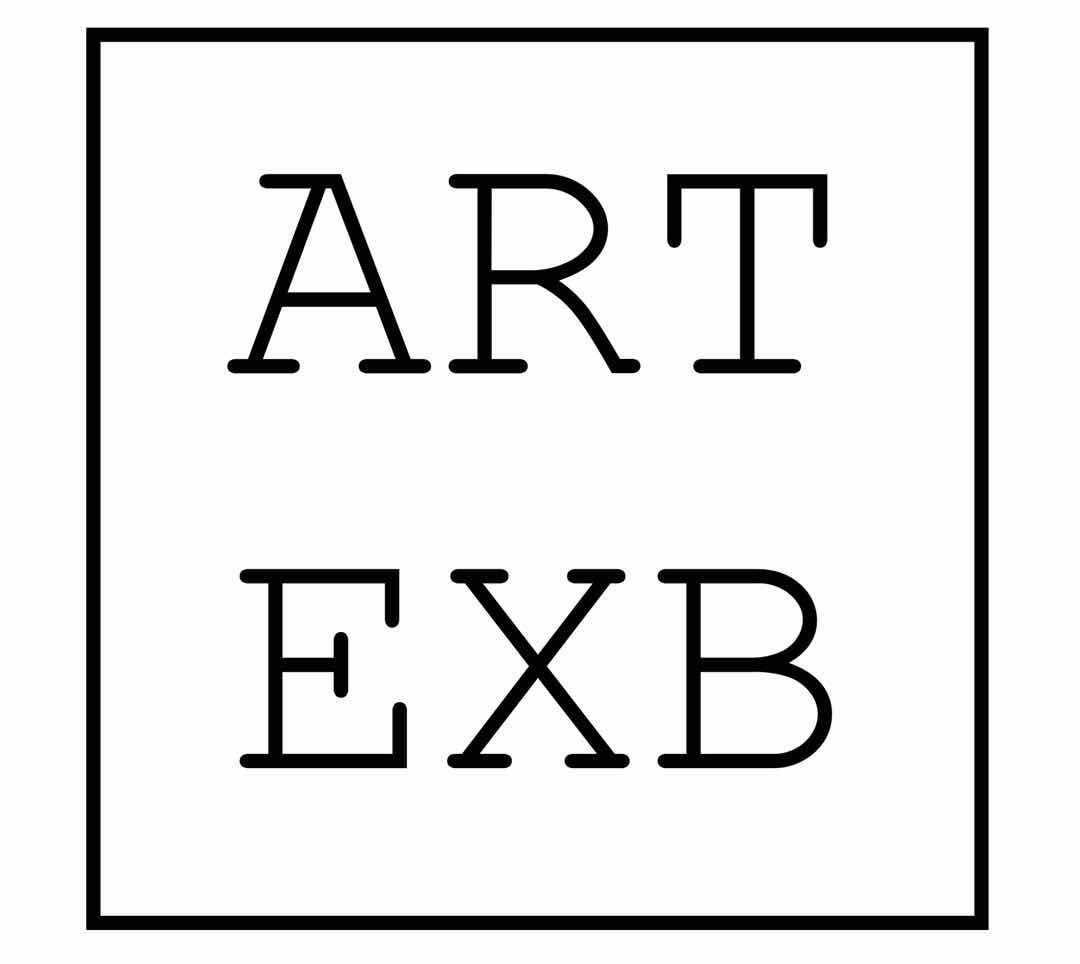贝浩登(巴黎)荣幸推出徐震个展——《文明迭代》,这是徐震与画廊合作的首个个展,将呈现其自2013年创立同名品牌之后的重要作品系列。迭代是通过重复反馈以到达所需结果的方法。徐震此次展出的作品系列,也将为我们呈现在艺术全球化与网络化日益加剧的当下,何以利用他的方程式接近艺术的未来。
早在2001年,徐震就曾作为当时最年轻的中国艺术家在第49届威尼斯双年展展出过作品。20岁就已经崭露头角的他,以个体艺术家的身份在之后的12年中创作了大量建立于个体意识之上的作品。随着新旧世纪交替带来的社会变迁,经济发展带来的文化变化从深处影响着这位触觉敏锐的艺术家。这最终导致了他于2009年在上海创立了没顶公司,在此分水岭之后,徐震的作品都由公司的模式产出,其“艺术家”的身份则被抛掷在了争议的漩涡中心,创作的关注点也开始转向艺术与商业。
今年的卡塞尔文献展策展人之一 Monika Szewczyk 曾这样写到:“诚然,徐震并不是第一个从个人转型为公司的艺术家,更多的艺术家选择不动声色的做这些事以使操作性与利益最大化。但没顶公司至少在一方面是特殊的:公司的生产越发地被理解为对“天国”概念的思索状态——它不提供给你关于天国的清晰图景(像宗教可能会做的那样),而是将其抽象化为一个问题。” “天下”系列的名字与天国比喻可谓不谋而合。这一系列的画作曾作为2014年军械库艺博会的整体视觉呈现,为艺博会的商业功能服务。极富景观意味的绚烂色彩被油画颜料一层层地堆叠成型,奶油裱花袋替代了传统画笔,在巧妙经营的图层和形态中造就了一派让人口舌生津的视觉盛宴。“天下”成功架空了艺术与商业的矛盾性——这也透露出徐震的策略,相较于针对看似坚不可摧的景观魔障,不如借由这样的力量,达成自身的自治。
这样的创作逻辑也促使徐震十分擅长于提取大众文化中的视觉符号。在“金属的语言”系列中,政治漫画的对话以一种聒噪密集的图式呈现在镜面玻璃板上,极具涂鸦感的排列方式看似在与政治语言的激进姿态统一立场,却被散发着奢靡气息的金属光泽出卖。作品内部的矛盾使其自身乃至生产它的主体都处于意义悬置的状态。
金属和奶油式的景观,曾错使人们将徐震的作品归结为波普艺术;然而,这显然只能概括他的部分作品。事实上,徐震在创作的思辨与对文化的挪用上已经走的比波普更远。“永生”和“进化”系列的作品指涉已经不再停留于消费世界,而是面向了一个更加浩瀚不朽的文明世界。远古时代遗留下的万世之作、丝路繁盛时代创作的敦煌壁画、西方现代主义经典雕塑——当我们看到这些物件以反复的样式变形或重新组合在眼前时,文明积蓄的精神力量以一种主动姿态引发了意义的内爆(implosion)。
此种精神力量不仅来自被引用的文明象征物自身,更来自于全球化互联网所带来的文化剧变。我们对于希腊雕塑的认知,总停留在灰白石膏表面,却忘记它们原先是富有颜色的神像浮雕。 文明遗物的真实面貌被悬置在每位远道而来、在博物馆探索古代文明的观光客心里。人们甚至寄希望于网络,通过搜索引擎以想象文化发源地的图景。语境的缺失横亘在希腊神像原先的彩色表面和白色石膏之间,更横亘在雅典卫城与电子屏幕上的雕像照之间。正是因为我们对于这样的文化现实过于习以为常,才使得看似分庭对抗的“永生”与“进化”系列显得异常和谐和瑰丽。
徐震从“艺术家时期”关注个体身份意识转向一个品牌对当下文化脉络的反复推演恰恰反映了人类在过去几十年间的巨大转变。互联网带来的意识延伸从智识深处打破了时间与空间的差异。文化的传统认知被信息与符号的泛滥瓦解,并让位于不断显像的文明停滞与标准失效。个体时时刻刻都面临着信息超快速传播所带来的不真实感,意义、价值和真实的界限逐渐消融。面对这样“后真相”时代的文明,我们不难理解为何徐震将“迭代”推举为一种面对后现代进程的有效方式——了无疆界的反复重组势必在无数次摧毁与重建中为当下开创新的文明范式。
Perrotin Paris, is proud to present Civilization Iteration, the first solo exhibition of Chinese artist Xu Zhen with the gallery, which will showcase Xu’s important series of works since 2013 when he started a brand in his own name. “Iteration” refers to the way of achieving a desired result through repeated feedback. The exhibited series will show how an artist, amidst increasing globalization and networking of art, can approach the future of art with his own formula.
As early as 2001, Xu participated in the 49th Venice Biennale, then the youngest Chinese artist to exhibit works at this international art event. Having made a name at 20 as an artist, he has since created a large number of works based on his own consciousness. The passage from one century to the next brought with it not only socio-economic but also cultural changes, the latter deeply influencing Xu as an artist. The great divide of his career came in 2009 when he established the art creation enterprise MadeIn Company in Shanghai. Since then his works have been produced in a corporate fashion and his “artist” identity has been plunged into the center of controversy. Meanwhile, Xu’s creative focus has begun to shift to the relationship between art and business.
Monika Szewczyk, a curator of this year’s Kassel Documenta, once said, “To be sure, Xu Zhen is not the first artist to transform himself into a company, and countless others incorporate more quietly to maximize their income and maneuverability. But MadeIn may be special in at least one respect: The company’s production could be understood increasingly to contemplate the notion of heaven – not offering up a clear picture the way religious authorities might, yet keeping this abstraction in focus as a question.” The title of the Under Heaven series echoes heaven as a metaphor. The paintings appeared in the 2014 Armory Show in New York to serve the commercial campaign for the fair itself. Layers and layers of oil paint form an ornate “landscape”, and with the skillful depiction and figuration of a cream piping bag (not a paint brush!), they make up an enticing visual banquet. The series manages to transcend the opposition between art and business, which exemplifies Xu’s creative strategy: rather than addressing the big spectacle issue head on, one might as well turn it into a positive account by creating a new approach of one’s own.
This way of thinking explains why Xu is so fluent in using visual symbols from popular culture. In the Metal Language series, phrases from political cartoons are presented in an intensive manner on a mirror-finished metal surface. The graffiti-like composition seemingly agrees with the radical stance of the political language but is in fact betrayed by the extravagance of the metallic gloss. This inner contradiction throws the works (and even their producer) into a suspended state of meaningfulness.
Because of their metallic and creamy landscapes, Xu’s works have been classified as pop art, even though the label apparently can apply only to some of his works. In terms of creative logic and cultural appropriation, Xu has no doubt gone beyond pop art. For instance, his series Eternity and Evolution all reference a far more expansive, long-lasting civilized world than the consumer society. Ancient art pieces, Dunhuang frescoes from the Silk Road’s heyday, representative modernist sculptures of the West…when we see these cultural symbols repeatedly change shape or re-combined in new ways, we cannot help but feel an implosion of meaning set off by the accumulated spiritual force of culture.
This force comes not only from the cultural symbols being used; it is in a way more the cultural changes induced by the globalizing Internet. In a modern context, we tend to identify Greek sculptures solely by their greyish white plaster, forgetting that they were originally divine statues with colors. The truth behind cultural relics is ever elusive to the museum visitor. People even turn to the Net, using search engines to make up their own pictures of the origins of civilization. Between the colorful Greek statues and the modern white plaster versions, and the Acropolis in Athens and sculpture photos on electronic screens, is the loss of a common context. And it is because we are so accustomed to this cultural reality that the two contrasting series Eternity and Evolution appear all the more harmonious and splendid to us.
From the “individual artist period” when he concerned himself with the consciousness of identity, to “Xu Zhen brand”, Xu has moved on to repeatedly examine the current culture. The transition is nothing less than a reflection of the tremendous changes in human history over the past decades. Admittedly, the extension of consciousness unleashed by the Internet has eliminated temporal and spatial disparity. Yet, in the process, cultural learning in the traditional sense has been destroyed by information overload, giving way to recurrent cultural stagnation and dysfunctional standards. The information highway makes one feel unreal, so much so that the boundaries between meaning, values and reality gradually blur. Living in this “post-truth” age, one begins to see why Xu should uphold “iteration” as an effective way of responding to a postmodern society. For in the course of time, after endless destruction and reconstruction, the boundless reformulations are sure to open up a new paradigm for civilization in the present.
